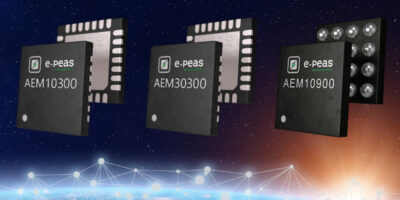Artificial intelligence (AI) which was previously limited to expensive machines with large power budgets can now be embedded in space-constrained, power-powered edge devices. Maxim Integrated says its MAXREFDES178# camera cube executes low latency AI vision and hearing inferences on a coin cell power budget with reduced cost and size.
The MAXREFDES178# enables low power IoT devices to implement hearing and vision. It is based on the MAX78000 low power microcontroller with neural network accelerator for audio and video inferences. The system also contains the MAX32666 low power Bluetooth microcontroller and two MAX9867 audio codecs. The system is delivered in a compact form factor to show how AI applications, such as facial identification and keyword recognition, can be embedded in low power, cost sensitive applications such as wearables and IoT devices.
AI applications require intensive computations, which is usually performed in the cloud or in expensive, power-hungry processors: self driving cars is an example. Maxim says that its MAXREFDES178# camera cube demonstrates how AI can operate on a low power budget, enabling applications that are time- and safety-critical to run on even the smallest of batteries. The MAX78000’s AI accelerator slashes the power of AI inferences up to 1,000x for vision and hearing applications, compared to other embedded solutions, reports Maxim. The AI inferences running on the MAXREFDES178# also show dramatic latency improvements, running more than 100x faster than on an embedded microcontroller.
The compact form factor of the camera cube (1.6 x 1.7 x 1.5inch of 41 x 44 x 39mm) allows AI to be implemented in wearables and other space-constrained IoT applications. The MAX78000 is up to 50 per cent smaller than the next-smallest GPU-based processor, says Maxim, and does not require other components like memories or complex power supplies to implement cost-effective AI inferences.
The MAXREFDES178# and the MAX78000 is available now, together with the MAX32666GWPBT+T RF microcontroller and the MAX9867EWV+T stereo codec at Maxim Integrated’s website and authorised distributors.







